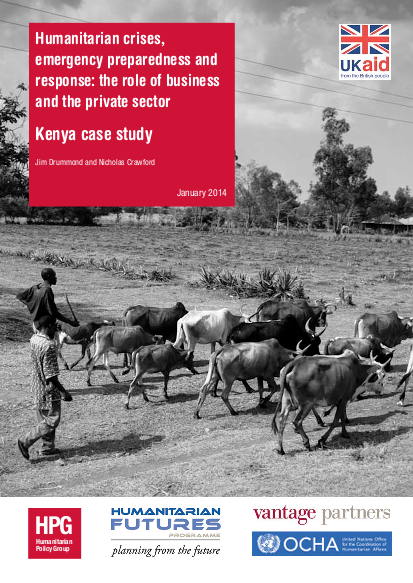
This paper explores the role of the private sector in humanitarian action in Kenya. Kenya was selected as a case study because it has a vibrant and innovative private sector, a history of severe and repeated humanitarian crises, notably drought in the country’s arid and semi-arid lands (ASALs), and a track record of public–private partnerships for humanitarian action that have exploited new technologies and experimented with new models of fundraising. The study explores the private sector’s current and potential roles in emergency preparedness and response; analyses the perceived benefits and negative impacts of private sector activity in support of people affected by crisis; identifies frameworks, structures and mechanisms through which the private sector supports emergency preparedness and response, and how these might be enhanced for better future collaboration; and investigates how humanitarian–private sector partnerships can best stimulate economic growth in Kenya, while also protecting humanitarian outcomes.